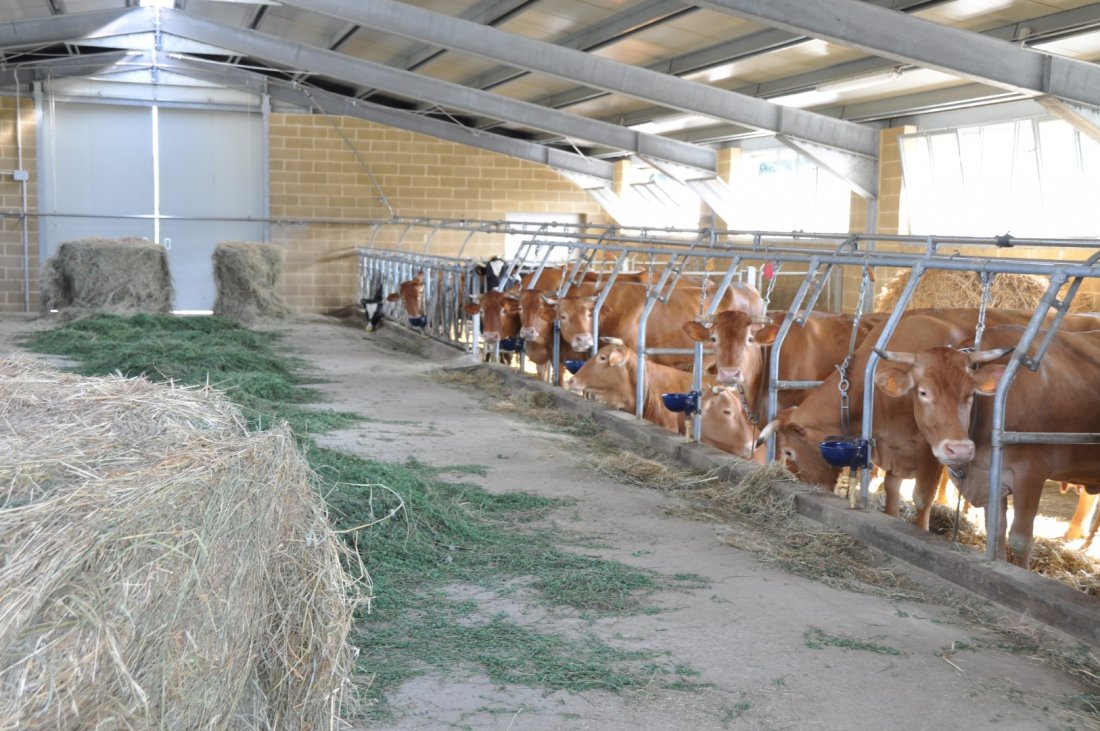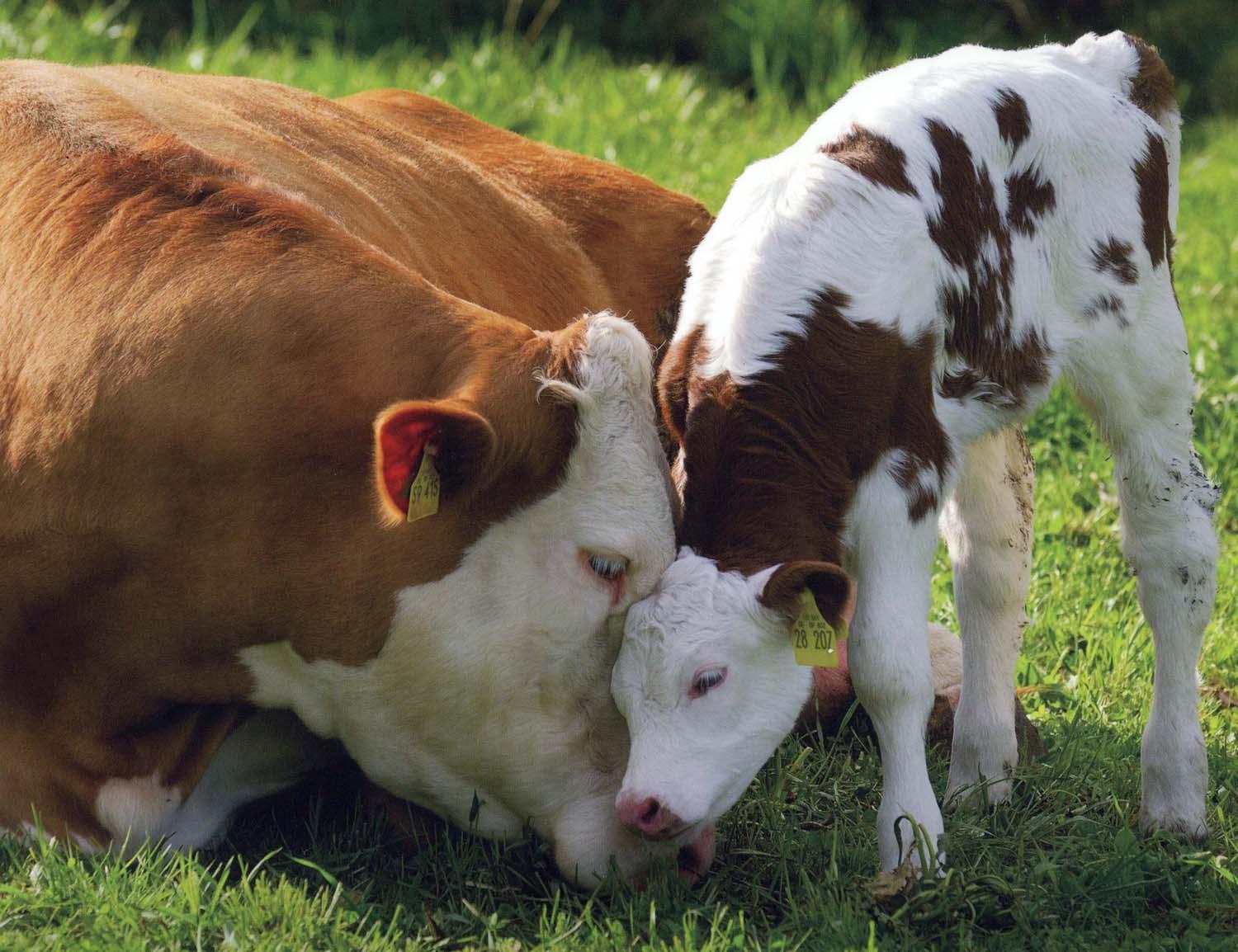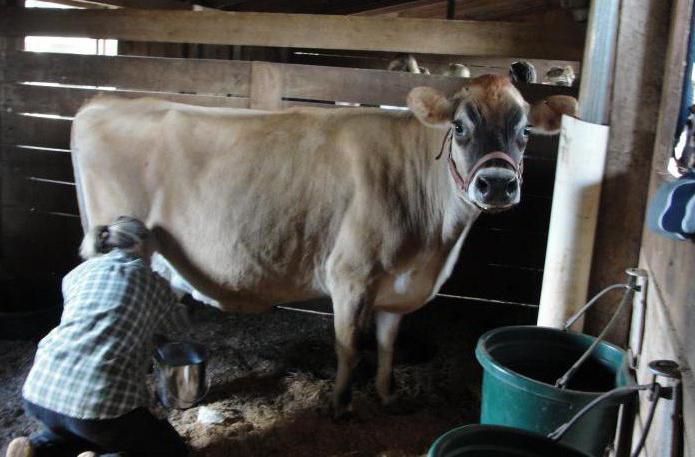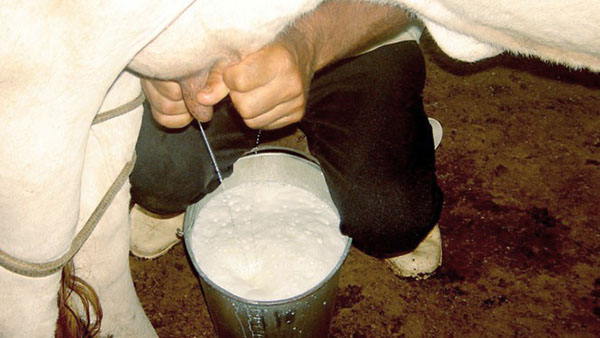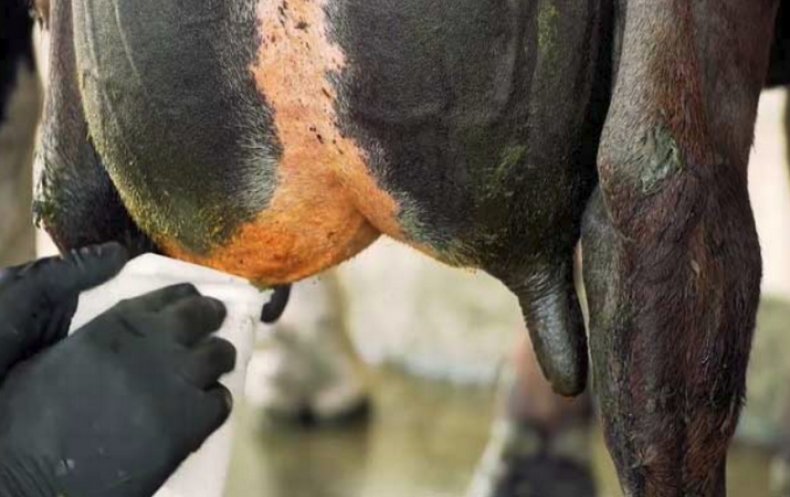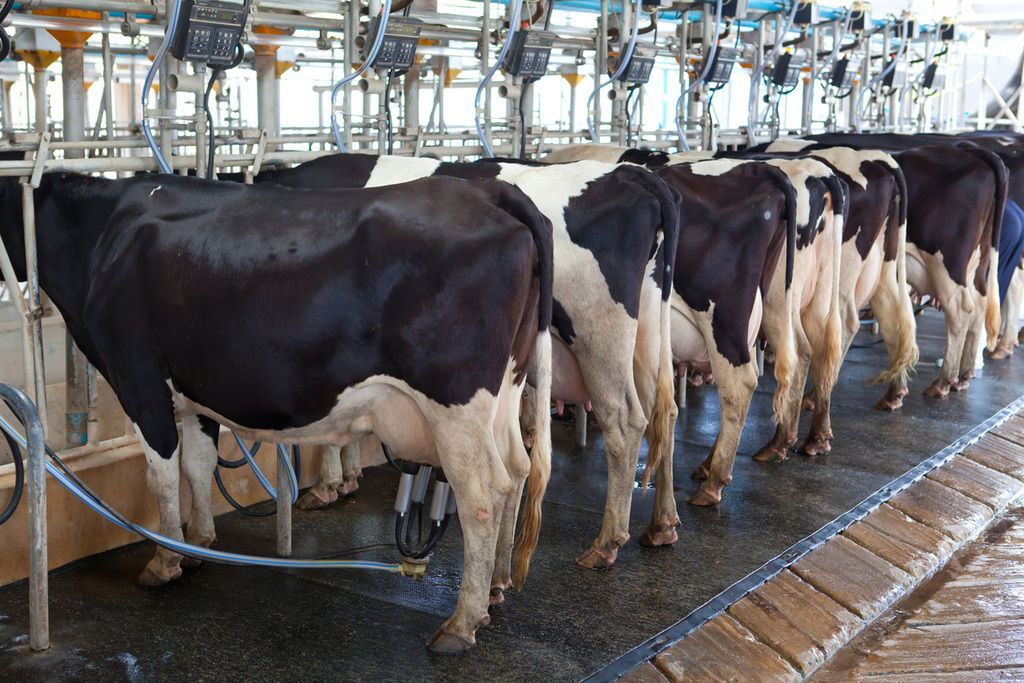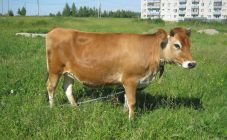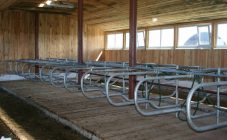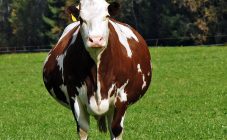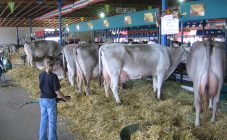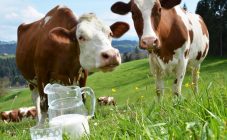Content:
Livestock raising is a popular trade in Russia, it can bring good income. But only on condition of a competent approach and adherence to the basic principles of caring for farm animals. This applies to keeping cows at home, such processes as raising, feeding, grazing, milking cows.
Cow care rules
Cows are kept in two ways: pasture and stall.
The first method involves grazing cows on pastures from spring to autumn, practically from the establishment of stable heat and the appearance of abundant greenery to frost or first snow.
The main rule of changing stables to grazing is a gradual transition. A few days before the pasture of the cow in the field, you need to introduce green feed into the diet. Otherwise, the animal may have a stomach ache.
At the end of the winter period, the cow should be examined by a veterinarian.
On the pasture itself, it is necessary to organize access to water for it.
With the onset of cold weather, it's time to take care of the stall. It is necessary to exclude the formation of drafts, insulate the room (in winter, the temperature should not fall below 5 degrees, otherwise the animal may get sick), clean, disinfect.
The cow should be fed 3 times a day with dry, grain, juicy feed if possible. After each feeding, the remaining feed must be removed. You need to drink water at room temperature after each feeding.
The care of cows after calving is somewhat different. Artificial insemination is increasingly being used to breed offspring. Calf gestation period is 285 days. Calving date should be determined in advance to prepare. A few days before this event, the cow is not allowed to graze. The animal remains in the stall, it can only be fed with hay and given clean water. This diet is followed for some time after calving.
After the calf is born, it is left near the mother. During this period, special attention should be paid to the cleanliness and correct milking of the cow.
Additional care includes regular cleaning of the barn, washing and combing the cow, trimming the hooves.
One of the main processes that affects the productivity of livestock management is the milking of the cow.
Correct milking of cows
There are two ways to milk a cow: manually and using a milking machine. In the household, if you have one or two cows, you can milk them by hand. It is very difficult to do without a milking machine in a farm.
How to milk a cow by hand
The process of milking cows by hand is rather painstaking and individual. It can be roughly divided into several stages.
Training
In households, 2 methods of keeping a cow are used: loose and tethered. The loose method is quite complicated and can only be used if the cow is very calm and not shy.
Before milking, you need to create a calm environment: avoid loud screams, sudden movements, close the door, stroke the cow.
The stomach and legs are wiped with a clean rag. The udder is gently washed out with warm water and wiped dry.Before you milk the cow, you need to do a little massage. It consists in lightly stroking the udder and nipples, while stimulating the effective delivery of milk. Thus, the milk will be pushed out more quickly, it will be easier to milk the cow.
Another important factor is the choice of a container for milk - you can use an enamel or plastic bucket, it is not recommended to use galvanized containers. After each milking, the bucket is washed with baking soda and dried.
Hand milking technique
There are two methods of hand milking: fingers and fists. A more gentle and effective way is with fists. Finger milking can damage the mammary gland or nipple tissue. This method is used for dispensing or for final milking.
The nipple is gripped with five fingers, with the thumb over the index finger. Compression of the nipple is performed with a smooth movement from top to bottom. Then the fist unclenches, the milk flows into the nipple again, the fist clenches.
Milking should be done with both hands at the same time, clenching fists in turn.
The milking process must not be interrupted - milk production may stop.
Completion
At the end of milking, the udder and teats are examined for cracks and damage, wiped with a clean cloth and smeared with petroleum jelly.
In the case when the cow does not allow her to approach her and when she tries to milk she begins to beat and jerk, you can tie the hind legs with a rope. If it is dangerous to approach from behind, another trick is used - a loop is thrown over the front leg. The other end of the rope is tied so that the leg is in the air. The cow loses its support and does not raise its hind legs, cannot kick.
How to milk a cow with a milking machine
Before starting milking with an electric milking machine, be sure to read the instructions or consult a technician. A popular device is the Doyushka apparatus.
Basic rules for milking:
- Checking the nipples for damage.
- The udder is washed, wiped thoroughly.
- The sequence is determined: first, the calving cows are milked, then the young ones and all the rest. Sick cows are milked last, after which the equipment is disinfected.
- Before installing the apparatus, several streams of milk are milked from each nipple into a separate container and checked for abnormal components.
- The unit turns on, it takes about 2-3 minutes for a vacuum to form. In this case, you need to monitor the readings of the vacuum gauge and pulsator.
- Teat cups are installed. The elastic should fit very tightly to the nipple.
- In no case should overfeeding be allowed - this can damage the milk duct. It is better to turn off the machine early and finish milking manually.
- Wipe the udder with a clean cloth and brush with antiseptic agents.
From which side the cow is milked
Despite the seeming insignificance of this issue, the comfort and quality of the milking process largely depends on its correct solution.
It is believed that the cow should be milked from the right side. This is a partially correct version. If a man or woman is right-handed, it is better to sit on the right side. Left-handers, accordingly, are more comfortable on the left side. In addition, you should take into account the arrangement of the barn, which location is more suitable.
How many times a cow is milked
The quantity of milk is influenced not only by the milking technique, but also by their quantity and regularity - in case of insufficient and irregular milking, the volume of milk produced may decrease, or this will lead to an inflammatory process.
The number of milkings per day depends on several factors. In the first days after calving, cows, especially heifers, should be milked 4 times a day.This frequency can and does require a lot of time and effort, but it prevents milk stagnation, mastitis and stimulates lactation.
Two weeks later, you can switch to milking three times a day. The most optimal interval between milkings is 8 hours. But in real conditions, such a regime is rather difficult to comply with. Therefore, it is necessary to establish such a routine so that the break between milking is 6-9 hours. A very important factor in this case is the implementation of a specific schedule - milking should take place every day at the same time.
At 6 months after calving, you can switch to two-time milking, a few weeks before launch - one-time milking. A cow starts (milking stops) a month or two before calving.
If a cow with bad nipples
Cows with irregular udder and teat structure are common. In such cases, the milking process becomes difficult for both the animal and the farmer. There are a few common problems:
- The udder and nipples are covered with warts. With such a pathology, milking should be done very carefully, the affected nipple may hurt, and it may kick and keep away from it. It is advisable to use a mechanical device and treat papillomas in parallel.
- The nipples are too thin or too short. This problem is relevant when using a milking machine. Teat cups do not adhere to the teat at all or do not adhere tightly. The device is sucking in air. This affects the quality and volume of milk yield.
To fix this situation, you can apply some tricks:
- Use soft hoses - they adapt better to the desired shape.
- Change the standard rubber to a dense one with a small head in the teat cups.
- Seal glasses with a towel. This is a rather effective method, if it is not profitable to change the rubber, the problem is temporary, and then there will be nowhere to put the device.
- Large udder. A conventional apparatus is not able to cope with such volumes. On a farm with a large livestock, a cow with this feature will need a special unit with long hoses and a large elastic band.
- The teats are very close or directed towards the middle of the udder. This inconvenience can be corrected by tying the glasses or swapping them.
Consequences of irregular milking
Regular and high-quality milking is one of the main factors in the productivity of cows. Not only the profit of the owners depends on it, but also the health of the cow. If the milking regimen is violated, milk production drops. If this situation is repeated regularly, or there is no milking at all, the animal may become ill.
Tips & Tricks
Experienced livestock breeders and veterinarians give priority to milking machines when milking cows. This method of milking is more carefree for the animal itself, and guarantees a complete milking. In addition, this method helps to collect the milk clean, without the ingress of foreign substances.
To exclude the possibility of contamination of milk with infections, samples of the product should be given to the laboratory for the necessary analyzes. The answer to the question why it is so important to observe this rule is quite simple. Thus, you can be confident in the composition of your own dairy products, their quality.
Keeping the livestock of cows in order to obtain high milk yield and produce dairy products is a rather laborious and responsible craft. Success in this fishery depends on the correct approach and the availability of special knowledge. Milking cows is one of the most important things to learn first.
